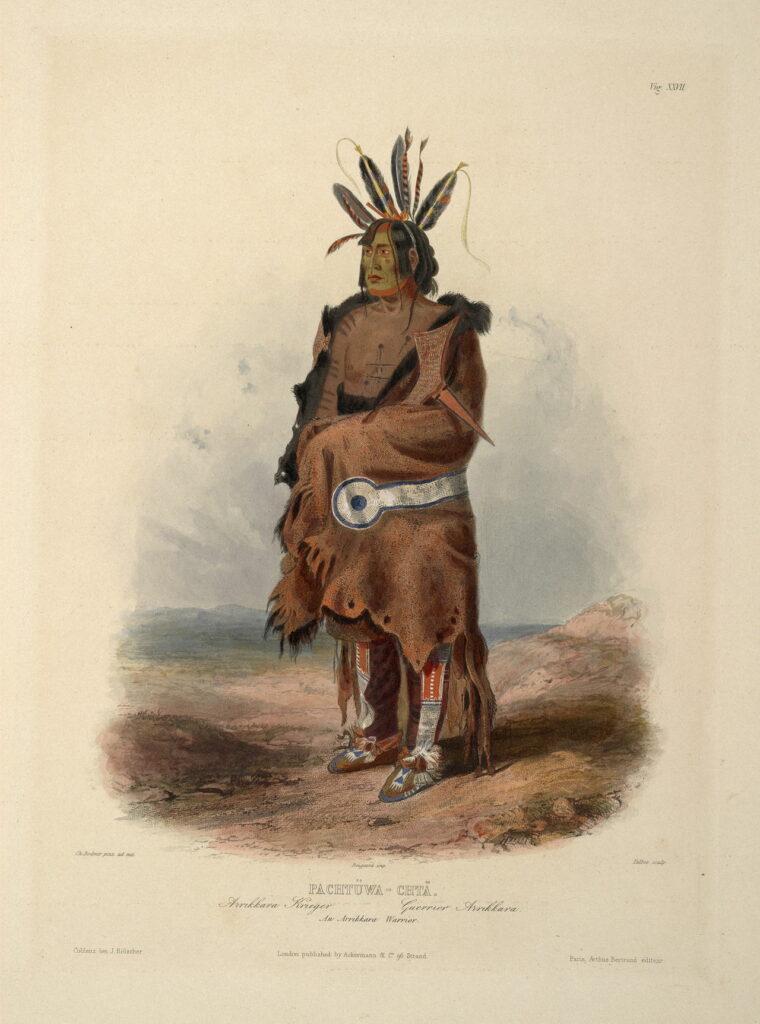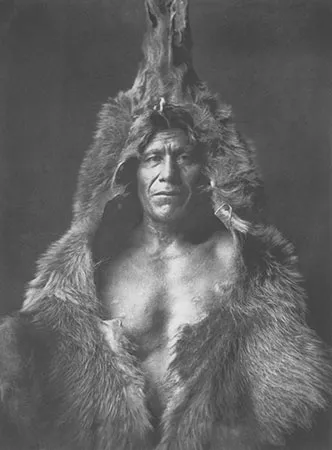The Arikara tribe, also known as Sahnish or Ree, are a Native American people whose traditional homeland is in present-day North Dakota.
Historically, they were semi-nomadic people who primarily lived in earth lodges along the Missouri River.
If you’re curious and want to know more about the Arikara tribe, their history, and their culture, continue reading.

History and Origin of the Arikara Tribe
The Arikara tribe differs from other North American tribes because of their origin. Unlike many Native American tribes whose origins can be traced directly to parts of Asia, the Arikara traveled to North America from Central America.
From there, the Arikara traveled through what is now Texas and Louisiana and made their way up the Missouri River.
Legend has it that the Arikara settled in areas along the Missouri River, up to North Dakota. However, the majority of the tribe settled down in various parts of Nebraska, Kansas, and South Dakota in the Great Plains region.

Although closely related to the Pawnee Indians, the Arikara tribe speaks a different dialect and is an entirely different tribe.
The Arikara are also very similar to the Skidi Indians, and the two tribes lived together for a time. However, the Skidi tribe remained part of the Pawnee Confederacy, while the Arikara chose to go their own way.
Lifestyle and Living Conditions
Unlike many other Native American tribes of the Great Plains, the Arikara didn’t live a fully nomadic lifestyle. Rather than living in teepees, they lived in semipermanent houses known as earth houses.
As the name indicates, these structures were made of dirt, mud, clay, and other earth-berm materials and shaped like a dome.
However, as the need arose, the Arikara would occasionally become semi-nomadic and travel with buffalo herds.
During these times, they would live in teepees. Because the Arikara weren’t as reliant on buffalo as other tribes like the Arapaho and Blackfeet Nation, they were more apt to live in their earth lodges.
Economy
The Arikara economy and diet were geared much more toward farming and agriculture than hunting and trading. They were a very self-sustaining tribe and skilled at farming maize, beans, squash, and various other fruits and vegetables.
The Arikara were such skilled farmers that their villages became a major center for trade among other Native American tribes.
Much of the farming was performed by the women of the tribe. They were skilled cultivators of various crops, but primarily corn, sunflower, and tobacco.
Because the Arikara women were so skilled at farming, planting, and gathering, it freed up more time for the Arikara men to hunt and raid nearby villages. The Arikara women were also the primary builders, cooks, clothesmakers, and preservationists.
In addition to hunting elk, buffalo, deer, and other game, the Arikara men also defended their villages.
Dogs also played a significant role in everyday Arikara life. On average, each family owned anywhere from 30 to 40 dogs and used them for various tasks.
This included guarding the village when the men were hunting, carrying items, transporting, and other tasks.
Beliefs and Tendencies of the Arikara Tribe
Like many Native American tribes, the Arikara were religious. A big part of their belief system revolved around something known as bundles.
Bundles consisted of a collection of objects that were bundled together and treated like living things. It was believed that these bundles had connections to the divine and to the sacred beings, and protecting them was critical.
Each bundle had its own bundle keeper that was tasked with protecting it and making sure that its needs were met.
The Arikara were a fiercely independent tribe. While this was often to their benefit, it was part of what led to their eventual downfall.
They had on-and-off wars with many more powerful Native American tribes, including the Lakota, Cheyenne, and Comanche, and only managed occasional peace treaties when trading was necessary.
The Arikara and White Settlers
The Arikara first made contact with white explorers in 1650 when they ran into French fur traders.
After this, they had very little contact with white settlers until Lewis and Clark stumbled upon them in a village in the Dakotas. Because of this infrequent contact, the Arikara were mostly peaceful with white settlers, explorers, and traders until 1823.
1823 was the year that the Arikara essentially declared war against all white people encroaching on their territory. White settlers and explorers were trying to drive the Arikara further west and north to monopolize the area’s fur trade.
The Arikara War, as it came to be known, was led by Chief Bloody Hand. However, because of depleted numbers and inferior weapons, the Arikara had little choice but to sign a peace treaty with the US in 1825.
Despite the treaty, the Arikara was troubled by war and disease until the Laramie Treaty of 1851. This treaty was supposed to be a permanent peace agreement between the Arikara and the US. While it helped to a certain extent, the Arikara continued fighting with other Native American tribes.
However, after another decade or so of fighting and troubles, the Arikara tribe combined with the Mandan and Hidatsa tribes, which had experienced similar issues.
Together, the three tribes became known as the Three Affiliated Tribes, and they were given a reservation in Fort Berthold, North Dakota.
The Arikara Tribe Today
At the peak of their power, the Arikara were feared and numerous. They had an estimated 30,000 tribe members during the 1400s, 1500s, and 1600s.
However, a series of wars and diseases, primarily smallpox and measles, decimated their numbers in the 1700s and 1800s. By 1861 when they merged with the Mandan and Hadatsa tribes to form the Three Affiliated Tribes, fewer than 3,000 Arikara were remaining.
Today, there are just over 1,000 people who are of Arikara descent. Most of these people still live on the Fort Berthold reservation, while many others are spread throughout northern and western North Dakota.
Despite constant relocation and troubles throughout history, many Arikara have found success today as buffalo ranchers and have found peace and purpose in the modern world.

